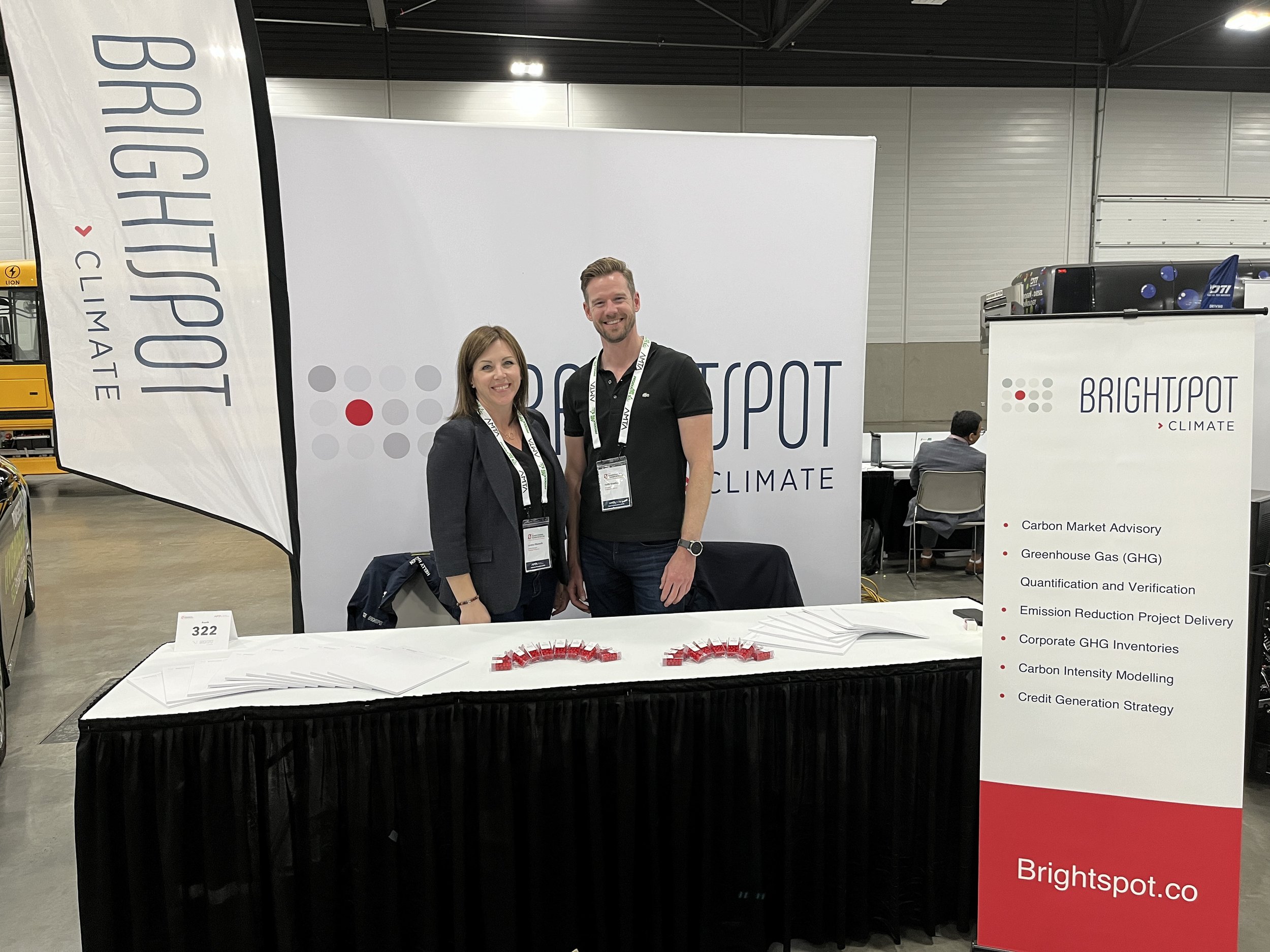Transportation Emissions, Reductions, and Quantification
Submitted by BrightSpot Climate Inc.
In alignment with the International Energy Agency, Canada has a goal to reach net-zero emissions by 2050. Canada’s efforts to achieve the necessary emissions reductions to reach net-zero include continued investment, a strong regulatory framework to drive change, and incentives to shift consumer behaviour away from highly emitting transportation sources.
In Canada, the transportation sector significantly contributes to greenhouse gas (GHG) emissions, accounting for approximately 25% of the country's total emissions. The transportation sector's emissions profile includes emissions from trains, ships, and airplanes, as well as other modes of transportation; however, the majority of these emissions come from road vehicles (e.g., cars, trucks, and buses), which are predominantly powered by gasoline and diesel.
In 2022, over 40.7 billion litres of gasoline and 18.3 billion litres of diesel were consumed in the Canadian transportation sector. Compared to 2021, the 2022 volumes are up 5.9% for gasoline and 2.1% for diesel[1]. Globally, in 2022, passenger and cargo transport activity increased by 3% compared to the previous year. The International Energy Agency’s goal to reach net zero emissions by 2050 means that CO2 emissions from the global transportation sector must fall by more than 3% per year from now until 2030[2].
The Canadian government has a series of incentives and regulations to support the transition from fossil-fuel-driven transportation to other, cleaner forms. A summary of these programs and regulations are detailed below:
Carbon Pricing[3]:
The federal government’s Greenhouse Gas Pollution Pricing Act places a regulatory charge on fossil fuels used in Canada (e.g., gasoline). The regulatory charge is a carbon pricing mechanism implemented to make emitting activities more expensive, encouraging businesses and individuals to reduce their transportation-related emissions.
Clean Fuel Regulation[4]:
The Clean Fuel Regulation (CFR) is a federal government regulation designed to lower the carbon intensity of fuels used in transportation.
The CFR requires primary fuel suppliers of gasoline and diesel to gradually reduce the carbon intensity of the fuels they produce and sell in Canada. The CFR also places a minimum requirement on blending of biofuels into gasoline of 5% and diesel of 2%. Many provincial jurisdictions have implemented similar or more stringent blending requirements in their own jurisdictions.
Zero-Emission Vehicle (ZEV) Mandate[5]:
Canada has implemented measures to increase the adoption of electric vehicles (EVs) and other zero-emission vehicles. The federal government set a target of 100% new vehicle sales being ZEVs by 2035.
Incentives like rebates for EV purchases and investment in charging infrastructure are being offered to encourage consumers to switch to electric vehicle use.
Fuel Efficiency Standards[6]:
The federal government has introduced stringent fuel efficiency standards for vehicles, as outlined in the Passenger Automobile and Light Truck Greenhouse Gas Emission Regulations. This regulation aims to reduce the carbon footprint of both passenger and commercial vehicles and align with international best practices, such as those in the U.S. and Europe.
Green Freight Program[7]:
Natural Resources Canada’s Green Freight initiative supports the adoption of fuel-saving technologies in the freight sector, such as more efficient trucks, improved logistics, and alternative fuels like biodiesel and hydrogen. Funding is available up to $40,000 for truck retrofits.
Quantification of Emissions in the Transportation Sector
As Canada continues to regulate and incentivise emissions reductions across the country, organizations are increasingly seeking to understand the carbon footprint of their operations.
Part of the operations-related carbon footprint of an organization is the emissions associated with transportation powered by fossil fuel. The two primary elements in quantifying transportation emissions include fuel consumption data and emission factors for fuel combustion. In Alberta, the Alberta Quantification Methodology (AQM) Document[8] governs the calculation methodology and emission factors for emission quantification.
Fuel Consumption Data: Organizations must collect fuel consumption data by tracking the volume of gasoline or diesel consumed in transportation equipment. The data collection process usually takes the form of fuel receipts showing volume, in litres, of fuel purchase and consumed.
Emission Factors: Table 1-1 in the AQM outlines emission factors for diesel and gasoline combustion that are to be used to quantify transportation emissions.
Multiplying the fuel consumption by the appropriate emission factors provides the overall GHG emissions released to atmosphere from fuel use in transportation.
Conclusion
25% of Canada's emission profile is from the transportation sector. Consumers and organizations must reduce emissions associated with transporting people and goods to achieve Canada's net-zero targets. The government has established many regulatory and incentive programs to drive change in the sector. Understanding consumer or organization's emission contribution is the first step in planning a decarbonization strategy for transportation.
Brightspot Climate Inc. is an independent climate change and energy consultancy that is experienced with all regulations and programs described above. We offer numerous advisory services in this field (e.g., emissions reduction program development, low carbon fuel (ethanol, hydrogen, RNG) carbon intensity calculations, and corporate greenhouse gas inventories), and we look forward to helping your organization navigate the impact of your transportation.
For more information, contact info@brightspot.co
[1] https://www150.statcan.gc.ca/n1/daily-quotidien/230919/dq230919d-eng.htm
[2] https://www.iea.org/energy-system/transport
[3] https://www.canada.ca/en/services/environment/weather/climatechange/climate-action/pricing-carbon-pollution.html
[4] https://www.canada.ca/en/environment-climate-change/services/managing-pollution/energy-production/fuel-regulations/clean-fuel-regulations/about.html
[5] https://tc.canada.ca/en/road-transportation/innovative-technologies/zero-emission-vehicles
[6] https://laws-lois.justice.gc.ca/eng/regulations/SOR-2010-201/index.html
[7] https://natural-resources.canada.ca/energy-efficiency/transportation-alternative-fuels/greening-freight-programs/green-freight-program/20893
[8] https://open.alberta.ca/publications/alberta-greenhouse-gas-quantification-methodologies

